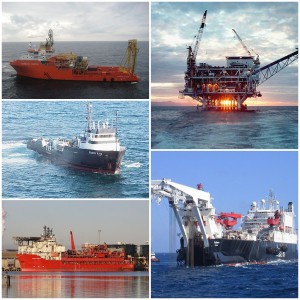 The offshore segment it self is more than big enough for site of its own (and there are a few) however I will only focus on the ship types used for supporting this industry. The offshore vessel segment has increased over the past decade due to extensive exploration of new fields in deeper waters than ever before. Vessels in this segment are highly specialized and I will only briefly go through most common types.
The offshore segment it self is more than big enough for site of its own (and there are a few) however I will only focus on the ship types used for supporting this industry. The offshore vessel segment has increased over the past decade due to extensive exploration of new fields in deeper waters than ever before. Vessels in this segment are highly specialized and I will only briefly go through most common types.
The offshore market is characterized by vessels built for assistance in oil extraction and exploration at sea. The specifications of the vessels depend on whether they are built primarily to move drilling rigs and their anchors, to deliver goods and supplies to oil rigs, to act as safety and fire-fighting vessels (stand-byvessels) or for other purposes required to maintain and expand oil production at sea. The North Sea and the Gulf of Mexico are the largest markets for offshore vessels, but other areas such as western Africa, Canada, the Far East and Brazil employ an ever-increasing share of the global fleet.
Apart from the more common offshore ship types, there exist numerous types of offshore related ships that have very specific characteristics.
These include: